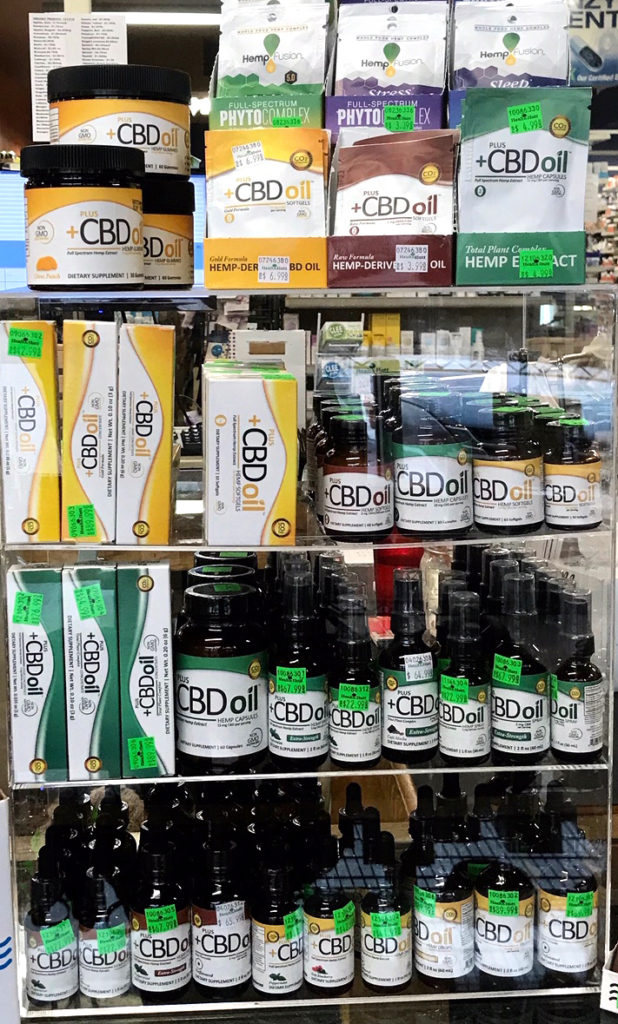
You've likely seen the letters 'CBD' around or someone has told you about CBD. It seems a lot of people are trying to wrap their head around what CBD is all about and whether or not they would like to try it. The goal of this blog post is to give you a very quick overview in hopes to help you gain some understanding on what CBD is, what it does, and whether you would like to look into it further.
Firstly, CBD does come from Cannabis sativa. CBD stands for cannabidiol, just one of the many chemical components found in cannabis. However, CBD products come from hemp. Only cannabis with concentrations of THC less than 0.3% of dry weight can be legally classified as hemp according to the Controlled Substances Act.
So plants with little or no THC and high CBD are best utilized for medicinal uses. The reason cannabis plants can vary so much in THC and CBD levels is the presence or absence of certain enzymes in the plant. One could do a lot of research on the varieties of cannabis plants!
If you have concern about THC, many companies do testing on their CBD products to guarantee a 0% THC content.
How does CBD effect the body? First one needs to have a basic understanding of the endocannabinoid system. Understand that this is an ever expanding field of research with more information sure to come.
The endocannabinoid system comprised of various elements including cannabinoid receptors and enzymes catalyzing the creation and and destruction endocannabinoids. The two primarily studied receptors are cannabinoid binding receptors 1 and 2, or CB1 and CB2.
CB1 receptors are well concentrated in central nervous system and primarily in the brain (particularly the hippocampus, the cerebellum, and the basal ganglia). CB1 affects memory, perception and movement and is linked to the mood enhancing effects of cannabis as well as dysphoria (Fine, 2013). This means it is also responsible for the extreme euphoria associated with getting high.
CB2 receptors are located throughout the body, thought to be concentrated in the peripheral nervous system. CB2 is thought to affect pain modulation, immune function and inflammation. (Fine, 2013)
Here's a summary of how THC and CBD act on the receptors in the body from RawlsMD article The Science Behind CBD - Everything you need to know:
CBD weakly binds to both CB1 and CB2 receptors in the brain and body, gently stimulating and blocking them at the same time. This not only mildly activates the receptors, but is also thought to trigger the body to create more CB1 and CB2 receptors, a process known as upregulation.
In contrast, THC binds to anandamide’s CB1 receptors even more tightly than anandamide itself, triggering an exaggerated or euphoric response - in other words, you get high.
Taking CBD results not only in an increase in CB1 and CB2 receptors but the natural levels of anandamide in the body are increased. Anandamide is a naturally occurring endocannabinoid also sometimes referred to as the 'bliss molecule'. The increase in receptors also makes the body become more sensitive to the endocannabinoids, including anandamide, that are already in the body. (RawlsMD, 2019)
In summary, the result of taking CBD as a supplement is improved mood and pain tolerance without getting 'high'. THC is the only constituent in cannabis found to clearly have psychoactive effect on its own. CBD is not psychoactive.
There is a lot of research being done on the specific benefits of CBD on various conditions and symptoms. There is a need for more research to scientifically confirm the therapeutic effects of CBD, although colloquially many people are sharing their success stories about CBD. Some proposed benefits of CBD are
- Decreased pain
- Enhanced sense of well-being
- Increased calm
- Improved sleep
- Reduced stress
CBD is thought to be helpful for nervous system conditions such as anxiety and stress, nausea, chronic pain and epilepsy (Tran, 2020)(Hill, 2017)(Blake, 2006)(Devinksy, 2014). There is some promise that CBD may have a positive effect on immune dysfunction, gut dysfunction, cancer symptoms including chemo-therapy induced vomiting and nausea (Duran, 2010), and possibly more.
Cannabis plants contain many other active cannabinoids and chemical components. So the benefits experienced from taking CBD oil, which is often a whole plant extract, may be due to some of the other constituents found in CBD oil. Terpines, also found in Cannabis, are thought to enhance the effects of CBD. So, whole plant products may be the next step in utilizing and researching hemp as a supplement.
At the Health Hutt we carry Plus +CBD Oil and they have a lot of great information on the Plus +CBD blog. We also carry Queen City Infusion, CBD Living, Charlottes Web Hemp, Suukuu, Empower and expect to carry more from some of our existing brands as more CBD products are released. For more reading you could also visit Dr. Bill Rawls' blog post on CBD, which is well-researched and very informative.
RawlsMD. (2019, January 30). The Science Behind: CBD Everything You Need to Know. [Blog Post]. Retrieved from URL.
Fine P, Rosenfeld M. (2013). The Endocannabinoid System, Cannabinoids and Pain. Rambam Maimonides Medical Journal. 4(4):e0022. URL
Tran T, Kavuluru R. (2020) Social media surveillance for perceived therapeutic effects of cannabidiol (CBD) products. International Journal of Drug Policy, 77. URL
Duran M, et al. (2010). Preliminary efficacy and safety of an oromucosal standardized cannabis extract in chemotherapy-induced nausea and vomiting. Br J Clin Pharmacol. 2010 Nov; 70(5): 656–663. doi: 10.1111/j.1365-2125.2010.03743.x
Hill K, et al. (2017) Cannabis and Pain: A Clinical Review. Cannabis Cannabinoid Res. 2017; 2(1): 96–104. Published online 2017 May 1. doi: 10.1089/can.2017.0017
Blake DR, et al. (2006) Preliminary assessment of the efficacy, tolerability and safety of a cannabis-based medicine (Sativex) in the treatment of pain caused by rheumatoid arthritis.Rheumatology (Oxford). 2006 Jan;45(1):50-2. Epub 2005 Nov 9.
Devinsky O, et al. (2014) Cannabidiol: Pharmacology and potential therapeutic role in epilepsy and other neuropsychiatric disorders. Epliepsia, 55(6), 701-802.
The information provided on this site is intended for your general knowledge only and is not a substitute for professional medical advice or treatment for specific medical conditions. You should not use this information to diagnose or treat a health problem or disease without consulting with a qualified healthcare provider. Please consult your healthcare provider with any questions or concerns you may have regarding your condition.
